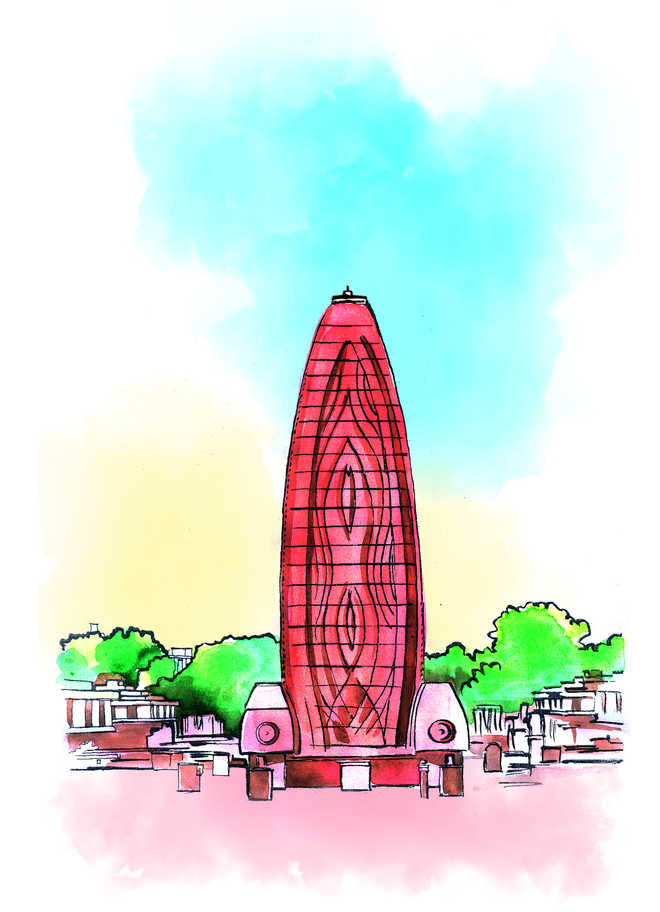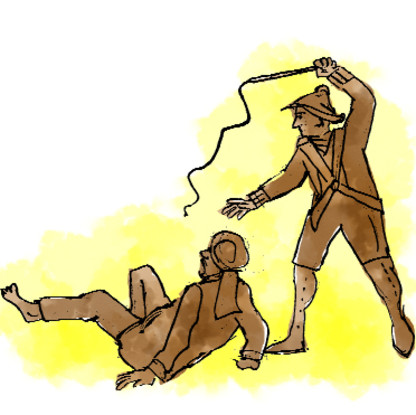The fear and terror unleashed by General Dyer still stalks the people living in Khoo Korian. Stories of his vengeful punishment are passed on to generations as tales of woe and suffering permanently etched upon the collective psyche


Nonica Datta
Jeevan Lata is a woman who worked as a mid-wife all her life. She lives in utter poverty on Khoo Korian, a mohalla close to the historic site of Jallianwala Bagh. The 13th of April is a significant date for her for two reasons. First, General Reginald Dyer shot dead innocent people in her city of Amritsar. Second, Dyer also made the people of her lane crawl on the street before he had their bodies lashed. In her mind, the massacre and the crawling episode fall on the same date.
Khoo in Punjabi is a well and Korian means flogging. Thus, Khoo Korian is a reminder that Dyer’s rage did not end on 13th April 1919. He wanted to punish Amritsar more. On 19th April, he promulgated the ‘crawling order’, with reference to a street where Miss Sherwood, a lady missionary, had been assaulted. The order, which was strictly enforced, disallowed Indians to pass through the lane, and if they did, they had to crawl. They were also tied to tiktiki (flogging post) and flogged with several stripes. Dyer also ordered 11 ‘insolent’ inhabitants to crawl between the two pickets. According to Amritsar’s popular writer, Naresh Johar, among those who were made to crawl included a blind man, a few handicapped people and a pregnant woman.
Jeevan Lata has grown up with the memories of the horror of 1919. Though her father was a survivor of the massacre, she, too, indirectly became a witness to the trauma of the violence. She shared with me the brutality enacted on her street by Dyer. A master storyteller, she identified the main sites connected with Dyer’s savagery. For her and the people in her neighbourhood, Dyer is remembered as a living monster, a khooni Dyer, a paapi Dyer, a katil Dyer and a kasai Dyer. She showed me the ramshackle building where Miss Sherwood had gone to conduct the exams for girls. I was then led to the house of Lalu halwai, who had rescued the lady missionary, and along with other friends, hidden her in Badri Nath’s old haveli. Jeevan Lata said, ‘She [Sherwood] was saved, if she had been killed, the entire mohalla would have been wiped out [O bach gayi si, je mar jandi, te mohalla urh janda]’.
The fear and terror unleashed by Dyer still stalks the people living in Khoo Korian. Stories of his vengeful punishment are passed on to generations as tales of woe and suffering permanently etched upon the collective psyche. I notice a six-year-old girl correcting her grandmother by adding ‘General’ to Dyer’s name and saying that Dyer arrived with a kora (hunter) in his hand. Indeed, the cycle of collective torture associated with the crawling street becomes a reference point to remember and forget the trauma of the Jallianwala Bagh massacre. The residents conflate the massacre in the Bagh with Miss Sherwood’s assault and Dyer’s inhuman crawling order. The violence at Khoo Korian remains the most powerful living memory, whilst that of the Jallianwala Bagh massacre recedes into the background. Many downplayed the significance of the Amritsar massacre: ‘It’s just a jalsa (community gathering) on the Baiskahi day which the sarkar (the ruling dispensation) organises for swtantrta senanis (freedom fighters).’ But, Khoo Korian, for these people, represents torture, humiliation and violation. The gaps in popular memory make the hidden histories of the Amritsar violence impenetrable in present times. I tried to find Punjabi folk songs around Amritsar district on the massacre, but to no avail. Communities do not remember. The irony, according to the local historian Madan Lal Vij, is ‘visitors go to Jallianwala Bagh, but never come to see Khoo Korian, which is just 10 minutes away.’
The locals remember the Jallianwala Bagh tragedy in varied ways. The shifting memories evoke unleashing of violence on a victimised collectivity. Some of those living in the vicinity of the Bagh, however, admit: ‘Shehr da sabto wadda hadsa si’ [it was the biggest tragedy of the city]. Different castes and communities, Muslims, Sikhs and Hindus, were present on 13th April. The city people feel that saadda (our) Amritsar was let down by the British Empire that they had devotedly served during World War I. Such memories are devoid of nationalist ideas and mainstream political meanings. Gandhiji’s name is absent from the scene. However, people remember the outstanding role of Punjabi leaders like Drs Saifuddin Kitchlew and Satyapal, Chaudhry Bugga Mal and Mahasha Rattan Chand. Hans Raj, the agent provocateur, who masterminded the Jallianwala Bagh meeting, has disappeared from public memory, almost the same way he vanished just before Dyer started shooting.
Sudarshan Kapoor, a well-known lawyer from the city, recalls that his father and grandfather saw the army entering the Bagh from the terrace. There were no women in the crowd, recalls Kapoor—a memory which challenges the dominant narrative that women were present in the Bagh. Kapoor tells me that an old man, Shankar Singh, munadiwala (public announcer), used to pass through the bazaar when he was growing up. He had publicly announced General Dyer’s infamous proclamation and order in the city, with the beating of the drum before the Jallianwala Bagh meeting. Kapoor’s father often asked him to repeat that pronouncement for the entertainment of his sons. Shankar Singh would declare in a loud voice: ‘Khalqat khuda di, mulaq Badshah da, Hukam General Dyer da’ [the public belongs to God, the country belongs to the King, the order is from General Dyer], implying that the gathering of more than four persons was prohibited and anyone disobeying the order, will be shot at sight. But people did not pay heed. Some did not even hear. They went to the Bagh and fell to Dyer’s bullets.
On the 100th anniversary of the Jallianwala Bagh massacre, such popular memories have been revived in gali-mohallas, katras, nukkads and dhabas of Amritsar. They are the most tangible testimony to the broken history of the massacre and the memory of the brutal violence perpetrated in Khoo Korian. The silences are equally telling. They point to the spiral of unresolved trauma that the people of Amritsar experienced in April 1919.
Khoo Korian is a reminder that Dyer’s rage did not end on 13th April 1919. He wanted to punish Amritsar more. On 19th April, he promulgated the ‘crawling order’, forcing Indians to crawl on the street where Miss Sherwood, a lady missionary, had been assaulted
* * *
The residents conflate the massacre in the Bagh with Miss Sherwood’s assault and Dyer’s inhuman crawling order. The violence at Khoo Korian remains the most powerful living memory, whilst that of the Jallianwala Bagh massacre recedes into the background
* * *
Communities do not remember. The irony, according to the local historian Madan Lal Vij, is ‘visitors go to Jallianwala Bagh, but never come to see Khoo Korian, which is just 10 minutes away.’
— The writer is associate professor of history at Jawaharlal Nehru University, New Delhi
